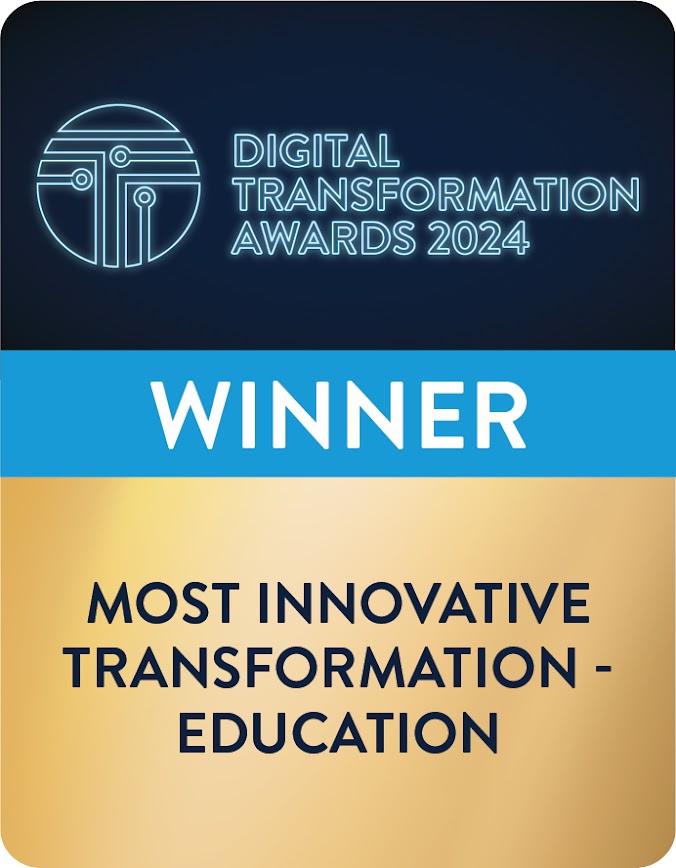Description
Programme Start Date
March 2026
Programme Fee
€1,799
Programme Delivery
- Total Duration: 48 hours (12 blocks @ 4 hours per block) over 12 weeks
- Blended – a mixture of live-on-line tutorials and on demand content. The blended delivery modes can be be-spoked to the preferred mode of the programme’s delivery.
Entry Requirements
A minimum Level 7 Ordinary bachelor’s degree in a cognate area such as business, finance or technology.
OR
A minimum Level 7 Ordinary bachelor’s degree in a non-cognate accompanied by a minimum of three years’ work experience in the financial services sector.
Applicants who do not have a Level 7 qualification and who have at least 5 years’ work experience.
OR
Applicants may also be considered through the University’s normal RPL procedures. Relevant professional experience may be considered, and individuals will be assessed on a case-by-case basis through the relevant RPL procedures.
Programme Overview
Audio overview
The programme, delivered through 12 blocks, is designed to help learners develop the necessary skills to design, implement, and maintain effective AML programs compliant with EU legislation regulations.
The programme provides a comprehensive overview of financial crime prevention in the EU context, covering legal frameworks, risk management, sanctions, and compliance technologies. It includes practical case studies, emphasises the importance of a risk-based approach, and introduces cutting-edge tools like data analytics and AI for detecting financial crimes. Designed for professionals seeking in-depth knowledge and practical skills, this syllabus ensures readiness for effectively combating financial crime within the EU’s regulatory environment.
Programme Objectives
- Understanding and Definitions of Money Laundering: To ensure participants can define money laundering, recognize its stages (Placement, Layering, Integration), and understand various typologies to enhance detection and prevention strategies.
- Impact Awareness of Money Laundering: To develop an awareness of the significant impacts of money laundering on economies, governance, and social structures, highlighting the critical role of financial institutions in its prevention.
- Comprehensive Knowledge of AML Legislation: To provide in-depth knowledge of both global and EU Anti-Money Laundering (AML) legislation, ensuring participants can interpret and apply these laws effectively within their operational frameworks.
- Application of AML Laws and Regulations: To empower participants with the skills to apply EU AML laws and regulations in compliance efforts, including adapting to recent legislative updates and understanding the influence of international bodies like the FATF.
- Skills in Transaction Monitoring and Reporting: To equip participants with advanced skills in both automated and manual transaction monitoring techniques, and in using tools like the EU FIU and goAML reporting platform for effective compliance.
- Cooperation and Information Sharing: To foster skills in legal and operational mechanisms of information sharing within the EU context, emphasizing best practices for cross-border cooperation and investigations.
- Technology and Compliance Solutions: To introduce participants to the AML technology landscape, demonstrating transaction monitoring systems, customer due diligence platforms, and digital identification technologies to bolster their financial crime detection and compliance efforts.
These objectives are designed to ensure that by the end of the program, participants are not only prepared to take on roles that require high-level AML expertise but are also capable of shaping the compliance strategies within their organizations based on current regulations and technological advancements.
Indicative Programme Syllabus
BLOCK 1: Introduction to Anti-Money Laundering
1.1 Definition and Scope of Money Laundering
- Defining money laundering, its scope and elements
- Understanding the basic process of money laundering: Placement, Layering, and Integration
1.2 Money Laundering Typologies
- Understanding the various money laundering typologies
- Studying cases demonstrating various typologies
1.3 Impact of Money Laundering on Society and Economy
- Understanding the effects of money laundering on the economy, governance, and social structures
- Discussing the role of financial institutions in preventing money laundering
BLOCK 2 : EU Legal Framework on Anti-Money Laundering
2.1 Evolution of Global Legislation
- FATF influence on global legislative environment
- Overview of EU, US, other regimes
2.2 Overview of EU AML Directives
- Overview of EU legislative environment
- Introduction to EU regulatory and supervisory authorities
- Interpretation and application of the applicable legislation and regulations
2.3 Recent Updates to the EU AML Environment
- Overview of recent FATF activity and impact on the EU
- EU’s response to FATF evaluation
BLOCK 3: Applying a Risk-Based Approach to AML
3.1 Risk-Based Approach to AML Compliance
- Principles of a risk-based approach
- Introduction to risk assessment practices
- Risk assessment of customers – high, medium, low-risk customers
3.2 Principles of CDD/KYC in EU
- Purposes of Customer Due Diligence and Robust Risk Assessments
- Discussing the key principles and procedures of KYC
3.3 Customer Identification, Verification, and Risk Assessment
- Understanding the methods and procedures for customer identification and verification
- Ongoing Monitoring and Continuous Risk Assessment
BLOCK 4: Sanctions and PEP Screening in EU
4.1 Understanding Sanctions and PEPs
- Evolution of Global Sanctions Environment
- Global Definitions of Politically Exposed Persons
4.2 Procedures and Best Practices for Sanctions and PEP Screening
- Foundation for Effective PEP and Sanctions Screening
- Assessing Risk and Materiality in Screening
4.3 Application of Enhanced Due Diligence
- Purpose and objective of Enhanced Due Diligence (EDD)
- Defining an effective EDD Policy
BLOCK 5: Transaction Monitoring and Reporting
5.1 Transaction Monitoring Techniques
- Understanding the importance and methods of transaction monitoring
- Discussing automated and manual transaction monitoring techniques
- Transaction monitoring trends and typologies
5.2 Reporting Suspicious Transactions
- Overview of the EU FIU and goAML reporting platform
- Understanding the process of filing Suspicious Transaction Reports (STRs)
5.3 Failure to Report Suspicious Transactions
- Legal obligations and implications of not reporting suspicious activities
- Enforcement actions and administrative penaltie
BLOCK 6: EU Case Studies on Money Laundering
6.1 Review of Money Laundering Cases in the EU
- Overview of regulatory mechanisms in response to AML failures (enforcement actions, administrative sanctions etc)
- Analysis of recent case studies across multiple financial services pillars (financial institutions, DNFBPs etc)
6.2 Best Practices and Lessons Learned
- Identifying and discussing best practices derived from the case studies
- Remediation planning and execution
- Developing strategies to avoid regulatory failure
BLOCK 7: Cooperation and Information Sharing
7.1 Information Sharing Mechanisms and Legal Aspects
- Overview of legal mechanisms enabling information sharing within the EU
- Discussing best practices in information sharing while ensuring privacy and confidentiality
7.2 Principles of AML Cooperation in the EU
- Role of the AMLD and other bodies in collaborating with international stakeholders
- Discussing EU’s role in international AML efforts
- Best practices in information sharing and cross-border investigations
BLOCK 8: Terrorism Financing
8.1 Understanding Terrorism Financing
- Defining and understanding terrorism financing and proliferation financing
- Comparison of trends, typologies and techniques in terrorism financing vs money laundering
8.2 EU Measures against Terrorism Financing
- Discussing the role of the EU in counter-terrorism financing
- EU legislative obligations and initiatives
8.3 Financial Institution Obligations
- Policies and procedures in AML vs CTF
- Best practices to detect, prevent and report terrorism financing
BLOCK 9: Compliance Program Essentials
9.1 AML Compliance Program Components
- Discussing the essential components of an AML compliance program
- Understanding the roles and responsibilities of the AML compliance officer
9.2 Enterprise-wide Risk Management
- Understanding the fundamentals of enterprise-wide risk management
- AML Governance, Risk Management and Control Frameworks
- Instilling a culture of compliance
BLOCK 10: AML Technology Solutions
10.1 AML Technology Landscape
- FATF and Regulatory position on AML Technologies
- Overview of emerging technologies
10.2 AML Technology Demonstrations
- Vendor demonstrations of AML technology solutions
BLOCK 11: Introduction to Data Analytics & AI for Financial Crime Professionals
11.1 Overview & Key Concepts
- Introduction to data analytics and artificial intelligence, and their significance in financial crime prevention
- Basic concepts of data analytics, machine learning, and AI technologies.
11.2 Applications
- How these technologies are applied to detect patterns, anomalies, and behaviors indicative of financial crimes.
- Examination of real-world examples where data analytics and AI have been effectively used.
11.3 Ethical and Regulatory Considerations:
- Discussion on the ethical use of data, privacy concerns, and compliance with EU regulations.
BLOCK 12: Review and Preparation for Certification Exam
12.1 Review of Programme Materials
- Thorough review of the programme content
- Recap of key learning points
12.2 Techniques for Successfully Passing the Exam
- Discussing tips and strategies for successfully passing the exam
- Question and answer session to clear doubts
Programme Assessment
Participants will be assessed through a mix of quizzes, project work, and a final computer based, proctored exam.
Full-Length Mock Examination – 3 hours
- Learners will undertake a full-length mock examination
Review and Feedback on Mock Exam Performance
- Reviewing the mock examination
- Providing feedback to learners on their performance and areas of improvement
Final Proctored Examination – 3 hours
- Grading the final examination
- Providing structured feedback to learners on their performance to help improve their professional competencies
Contact Details
Get in touch for more details [email protected] or call +353 87 299 6839








